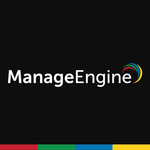What is our primary use case?
We use it for IT service management. We use it for HR service management. We also use it in an operations capacity in combination with some other tools.
We use a combination of Freshdesk, Freshservice, and Freshchat. We use the whole suite. We're the third largest customer of theirs.
We have the Enterprise plan, and we have its latest version. We are in beta testing for another upgrade that they're doing, but it is still in beta. So, it is not live yet. It is a cloud solution. Freshservice owns everything. We just use it as a cloud platform.
How has it helped my organization?
Our SLAs are being met way more consistently. We're seeing that customer issues are getting answered in a timelier manner. Our tech issues are resolved in a more timely manner. We have more access to information with the combination of knowledge, tickets, etc. We have integrated it with Jira. So, I can look and say that I have a ticket, and I need to send something to a developer in Jira. I can just do that with a click from Freshservice, which makes it easy. Configuring it is also super simple.
What is most valuable?
Its ease of use is fantastic. It is just above and beyond, especially when you compare it to something like Cherwell, Salesforce, or anything like that. It is on its own level. It is so easy to administer. The way everything is organized and the way it builds its own documentation is very good.
It integrates with a lot of things. If they don't have an integration, once you bring it to them, a lot of times, they get that working in their pipeline. They get integration with different software going. They really are looking to do things a little bit better than others, and it shows how much work they put into the platform.
What needs improvement?
Sometimes, the billing process is an absolute nightmare. That's really frustrating. If you have a straightforward contract and don't need to make changes, it is fine, but if you need to make any changes, it'll take months.
The other piece is that sometimes, they will push out updates without telling you they're doing updates, or they'll just have it as a notification. If you don't go and actively check, you just won't even know it is pushed out. You have to stay on top of it. You can't pick the version you're on. Everybody is on the same version, which is great and makes being an admin and working on the platform a much more consistent experience. For the most part, it is all pretty much the same.
As compared to the Freshdesk knowledge base, it needs work. You can't save knowledge-based templates, which is a little bit ridiculous. For example, you can't have article templates in there. These are IT people. They're not thinking about formatting. We've got to do that for them.
Some of the ways that tasks are reported on and shown can be better. You can't see tasks in your regular ticket list view. You can't see a combo view of tasks and tickets. It is a little bit difficult to get a solid overview of your list of things to do. You can only see them in separate views, instead of one single view.
There should be the ability to add screenshots into a service request without having to download and attach them because that can be really frustrating for users. You can do that in the incident version, but you can't put a screenshot in a service request, which is frustrating. The users certainly don't want to take a screenshot, save it to their computer, and then attach it just to submit the ticket. They could just print the screen.
I would like to see further integrated analytics, which is something that's on their radar. I would also like them to bring back some of the different metrics that they got rid of. I know that's on their radar too, and they're working on it. The unified bot builder is also on their radar. There is so much stuff that I know is already getting ready for deployment in the next year.
The vendor-provided training material has some room for improvement. We disabled the incidents in our portals, and the customizability of all that has also been awesome, but beyond that, it would be good if I could see how a service request goes from end to end instead of being a whole lot of things.
Their support could also be better. We have had some long-drawn-out and unnecessary experiences because of their support.
For how long have I used the solution?
I have been using it for about two years.
What do I think about the stability of the solution?
The uptime is fantastic. We very rarely have any issues with anything going down. Sometimes, it randomly slips into Arabic, which is weird, but it only happens to one user. So, I don't know what the user is doing. After refresh, it goes away. It might be a user problem.
What do I think about the scalability of the solution?
It is scalable. We're their third largest customer, or we used to be. I don't know if we still are. It works very well for us.
We use it very extensively, and we're looking at expanding to additional teams. We have about 300 users. In this instance, I have 200, and then in another instance, I have 30 right now. I'll have another hundred in the next couple of months. We're bringing all of our dispatch operations into it. It is going to be a big list.
From a scalability perspective, it is really good, but Freshcaller isn't. We can't use their full suite of solutions because even though Freshservice is extremely scalable on its own, when we're looking at upselling to Freshcaller, they just can't support the fact that we do a million minutes a month, which is a lot.
How are customer service and support?
We literally have weekly meetings with them, and for the last two years, we've had some hit-and-miss experiences. The response time is great, but when they reply with a knowledge base article, the way we are into the system, we would've already read that before approaching them. That's why we're asking them. I sometimes get a little bit frustrated about that.
Sometimes, there are some communication issues with their support. I spent a year just being like, "No, we shouldn't be in Freshdesk for this." They were telling my bosses that we should be, and I was like, "I'm telling you that's incorrect. Why are you telling my boss that? You don't even work here?" You don't even go here. What are you doing? They don't even check your circumstances. I am a certified Six Sigma Black Belt. I gave them all of our process maps and everything, and they didn't even read over them. They just kept trying to put us into Freshdesk when Freshservice was a better fit because all we do is move around trucks, trailers, and drive. That's what we do all day long. I would like to know how we would do that without asset management or a portal with forums. They were just constantly trying to get us to implement break fix after break fix after break fix instead of putting us in the right product in the first place. It wasted a year's time and money.
I brought a guy onto the call. He said the same thing to them in a guy's voice, and then they were like, "Oh, we get it now." I sent them a PowerPoint, and I said the exact same thing in email all the time. The guy was like, "I literally just said exactly what you said in the exact same words and with the same cadence." They just wanted to hear the guy say it. I said, "Are you kidding me?" And then they asked if he was my boss. He was not. I was training him. That was my one really bad experience because it went on for a full year, but it has been resolved now. Everything is good now, but I was deeply frustrated at the time. I would rate them a three out of five. That was a really long drawn-out experience, and it was so unnecessary.
How would you rate customer service and support?
Which solution did I use previously and why did I switch?
For IT specifically, we used Cherwell. Operations were working out of email, and HR was also working out of email. Cherwell is just a nightmare to work with. It is a nightmare to administer. We were able to stand up and migrate away from them so quickly and easily. It might have cost a little bit more the way that we did it, but it was completely worth it. Our reporting looks better, and our analytics looks better. Everything is drastically improved.
How was the initial setup?
I run two instances of it, and I deployed both. It just depends on the needs of the business. If you need a lot of custom development, then you do, but if you don't, then you don't. It depends on the level of complexity that you have for your buildout such as:
- How many workflows do you need?
- How many admins do you have?
- How many people do you have?
Because of the size and scope of our group, it took longer. We spent six months on it. Migration from Cherwell for IT and then for operations is an ongoing thing.
What about the implementation team?
It was implemented in-house. There are three of us who work on this and the intranet full-time. It is a combo role, and then I have two people on my team. They just added intranet to my role. So, it takes three of us just to make sure that we can support because we have so many different types of teams, but a smaller team wouldn't need as many.
What was our ROI?
We deployed IT into Freshservice about eight months ago, and we reorged IT three times since then. It is a little bit difficult to quantify right now because the teams have been moving so much, but I do know that our teams are way happier with it.
We see that the metrics are getting better. Cherwell metrics were just so bad that even our baseline was so off. We had people who just wouldn't ever close tickets. I found tickets that were three years old in VIP status in Cherwell. It was just that they would just get lost in there. Now, we actually have visibility into that.
What's my experience with pricing, setup cost, and licensing?
There are some additional costs but not that many. For example, we have unlimited assets, which is something for which we pay extra. We also paid for additional orchestration. I would rate it a three out of five in terms of pricing. They are right in the middle.
Which other solutions did I evaluate?
We went through ServiceNow. We went through Cherwell and then landed on Freshservice. They might have vetted other options, but that was before my time.
What other advice do I have?
I would advise bringing somebody in who knows the product, at least as a part-time consultant. That's because a lot of times, they'll sell it as like, "Oh yeah, sure, just have your director of operations set it up." In some of the instances where I've done consulting work. it didn't work the way it should because one step was missed. It is very fixable, but that's also why it was not working. If you don't have someone who can dedicate time to learning how the workflows work and how to make things talk to each other within it, it can be frustrating.
I would rate it an eight out of ten. It is so much better by leaps and bounds than everything else that I've worked with.
Which deployment model are you using for this solution?
Public Cloud
If public cloud, private cloud, or hybrid cloud, which cloud provider do you use?
Other
Disclosure: My company does not have a business relationship with this vendor other than being a customer.




















